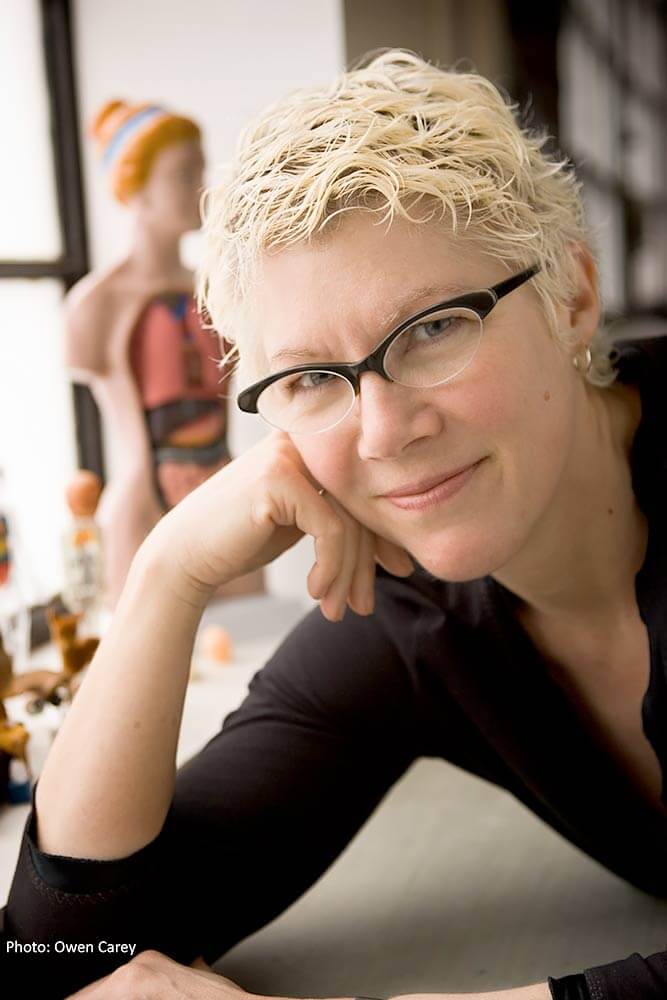Grace Weston creates narrative photography in her studio with miniature staged vignettes that address psychological themes. Among her many honors, most recently Weston made the Top 50 in Photolucida’s Critical Mass 2023, and from that was awarded the additional prize of a solo show for 2025 at the Southeast Center for Photography. Weston was awarded both First Place Overall Portfolio category as well as Gold Winner in the Fine Art Portfolio category in the 2021 Tokyo International Foto Awards. She has earned fellowships from both the Oregon Arts Commission and Artist Trust (Washington State), nominations for Portland Art Museum’s Contemporary Northwest Art Awards (Oregon), and numerous grants during her career spanning more than 25 years. In 2012, she had her first European solo exhibition at Paci Contemporary in Brescia, Italy. An extensive exhibition of her work was shown at the Center for Photography in Yekaterinburg, Russia in 2021. She has exhibited widely in the US, as well as Europe, Scandinavia, Russia and Japan. In 2009, she was a finalist in PhotoEspana’s Descubrimientos exhibition in Madrid and named one of the “Nine to Watch” in the Whatcom Museum Photography Biennial (Washington) in 2008.
Weston's work has been acquired by the Portland Art Museum (OR), the Amon Carter Museum of American Art (Fort Worth, TX), the University of the Arts (Philadelphia PA), Seattle Public Utilities Portable Artworks Collection (WA), King County Public Art Collection (WA), Photographic Center Northwest (WA), Portland Community College (OR), King County 4Culture (WA), the City of Seattle Portable Works (WA), as well as numerous private collections in the US, Europe and Japan.
Weston’s signature photography has been commissioned for print magazines and book covers in the United States, Italy, Spain, China, and the Netherlands, including O, the Oprah Magazine, Discover magazine, and Geo Magazine (Italia). She is included in the book Microworlds (Laurence King Publishing, UK 2011). In 2020 Peanut Press published a monograph of her work entitled The Neighbors Will Talk, and self-published Character Studies in 2023.
Statement
I am an interdisciplinary artist working in the genre of staged photography, creating miniature narrative scenes with characters, props and sets that I source, alter, or fabricate from scratch, to then light and photograph. Although I never depict actual people in my photographs, the human psyche is undeniably at the center of my work. Power dynamics, gender roles, clandestineness, mythos, mystique, and feelings of isolation and alienation are explored in my work, all with a deceptively playful overlay.
Reclaiming the Muse
My staged miniature photography series, RECLAIMING THE MUSE, reframes historic artworks and stories in contemporary terms. In centering the women, historically cast as objects of beauty or scorn, I strive to revitalize the muse with agency, furthering the issues important to me as a contemporary female artist, flipping the patriarchal gaze on its head.
The Long Night
In these miniature narrative Noir scenes, lone characters appear in decidedly suburban environments: cul-de-sacs, dark and empty roads, the small-town bar, private basements and bedrooms, all offering an impression of seclusion, ripe for clandestine schemes. The scenarios take place at night, with minimal lighting, heavy with mystery and tension. We get to squirm with the sense of being voyeurs. These images are inspired not only from the television and film mysteries and spy stories of my childhood, but also from the sense of being a silent observer of the shadowy grown-up lives around me. My props and characters may come from a child’s world, but these are adult stories.
Escaping Gravity: Breathing, Dying, Swimming, Flying
I presented a multi-media installation at Nine Gallery in Portland, Oregon in 2018 about loss, its lifelong ripples, release, and liberation. There were two chambers in this installation, one being the Pond, the other, the Pool, symbolizing my older brother’s death by drowning when he was eight-years old, and my learning to swim very late in life.
